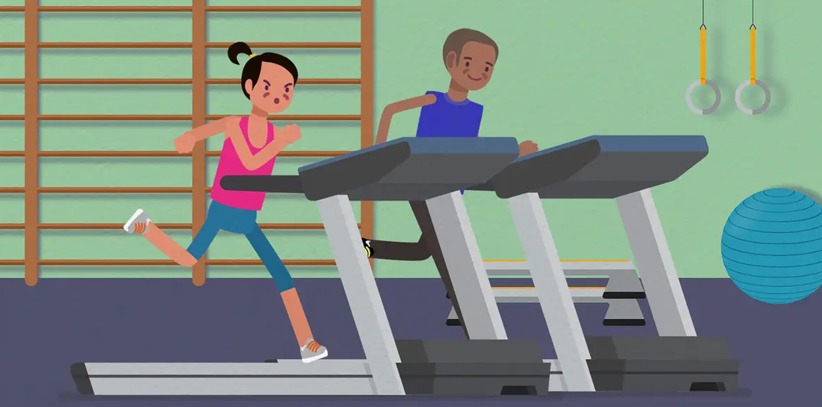Tendinopathy
What is a Tendinopathy?
A Tendon is a strong cord like structure that attaches muscle to bone. Feel above your heel to find you Achilles tendon for
example.
A Tendinopathy means an injury to the Tendon leading to pain and reduced strength (or what we call reduced Load Tolerance Level)
Why did I get a Tendinopathy?
Often it is caused by a recent change in activity level that
exceeds your load tolerance level putting more TENSION (pull) or COMPRESSION (squash) through the tendon. E.g. doing more exercise or sustaining prolonged static positions. It can also occur if your tendon has been made weaker by excessive inactivity or rest and by some medical conditions (daibetes/obesity/cholesterhol).
How do I know it's a Tendinopathy?
How long will it take to improve?
How common are Tendonopathies?
Osteoarthritis.
Understanding Tendons
As a muscle contracts it generates energy which is then transferred to a joint via the tendon. Like the rest of your body, the tendons are continuously adapting dependent on the forces that are going through them. Like the muscles that they attach to, tendons will become stronger if their workload increases and weaker if their workload is reduced.
A problem can occur if this workload changes too quickly so that the tendon does not have enough time to adapt and therefore is not strong enough to cope with the demand. It can also occur if the tendon is compressed for too long due to poor posture, joint stiffness or weakness of surrounding stabilising muscles. We call this OVERLOAD. This then leads to pain, weakness of the surrounding muscles and reduced tendon load tolerance
Causes of tendon overload
- A recent increase in activity level, e.g. walking everyday on holiday when you are used to a sedentary lifestyle. This can cause a pain reaction in your tendon and can lead to surrounding muscle weakening and reduce tendon load tolerance.
- A recent reduction in activity level, e.g. after a period of illness or rest/inactivity. This can weaken the tendons and cause a reaction if you return straight back to your pre-rest activity levels

Diagnostic Ultrasound
Diagnostic ultrasound is a very useful imaging resources that allows are clinicians to accurately diagnose your tendon problem. It will improve your understanding of what exactly is going on as well as allow our clinicians to assess for secondary causes of tendon related pain which may be amenable to specific treatment earlier in the treatment process.

Will my tendon snap if I exercise?
The right progressive exercise load is vital for tendon recovery. There is no evidence that this will rupture a tendon.

Do injections help?
It is not advised to inject into a tendon as it can be damaging. Injection around the area can give short term pain relief allow better compliance with graded rehab. However there are some potential risk especially when injecting around weight bearing tendons. It is also importance to note that injections will not allow the tendon to tolerate more load. Gold standard treatment for any tendinopathy remains progressive rehab.
What about my general health
Conditions such as diabetes, high cholesterol, obesity and having a poor diet can be linked to Tendinopathy by weakening the tendon overtime and reducing its load tolerance. Working on changing these factors is just as important as exercise therapy.
Tendinopathy Lifestyle Factors
Your general health will impact on your tendon health
There is growing evidence that the following conditions are linked to tendon degeneration and therefore reduced load tolerance – obesity, Diabetes, High blood pressure, High Cholesterol. The conditions along with some of their medications (statins, antibiotics, blood pressure medication) can weaken the tendon structure making it more prone to flair up.
We also know that poor sleep of less than 6 hours per night can impact your recovery. Just one night of poor sleep has been proven in research to cause an increase in pain the following day. This is important to remember and not panic if your pain levels do increase after experiencing poor sleep.
We currently do not know if these categories of patients make full recovery with exercise alone. Therefore a combined approach looking at exercise, lifestyle changes and medical condition management may be the best option. An inability to modify these factors may impact your recovery with exercise alone.
Please fill in the questionnaire on the next page to see how these factors may contribute to your recovery.

As previously mentioned, Tendons can have the tendency to flare up or REACT if too much load is put through them.
This REACTION can be caused by having the exercise load too high or because some of the daily activities you are doing apply too much load through the tendon.
A REACTION is when you experience unacceptable pain (>5/10 NRS) either at the time of activity or within the first 24 hours. Another sign of REACTION is an increase in your Hallmark sign aggravation.
If the discomfort is an acceptable level and returns to your pre activity level within 24 hours it is safe to continue with your regime

Are my daily activities / exercises at the right level?
YES – if you get some discomfort which resolves in 24 hours and you are able to tolerate more repetitions or weight during the exercise
NO – if your Tendon REACTS or if the programme is too easy and you don’t feel any effect on your Tendon
If you feel your exercises are not at the right level please let your Physiotherapist know
Tendinopathy Reaction Rules
Reaction – what to do
SHORT REST -
If you have a tendon reaction firstly you should rest for 48 hours.
ANALYSE -
Tendons usually react after the event and sometimes not until the next day. Look back over what you have been doing over the previous few days. This could be putting too much tension through the tendon like increasing your walking mileage or holding your tendoon in a compressed position for long periods like sitting on a low chair
MODIFICATION -
If you identify the potential reason for the REACTION make appropriate adjustments to your daily activities
GET BACK ON TRACK -
After your 48 hour rest slowly start to load the tendon again. You may need advice from your Physiotherapist to identify an easier load to start with.
DO NOT REST FOR LONGER -
Resting for longer period will cause the reaction to settle but it can also cause your tendon to weaken putting your rehabilitation back by many weeks
